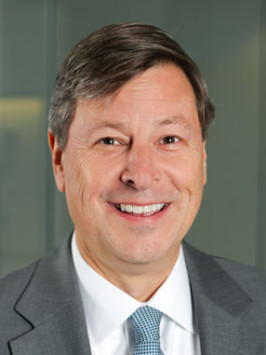Overview
I
Shares
SBIIX
Inception
Date
12.01.2014
Investment
Min.
$1,000,000
Subsequent
Investment Min.1
N/A
Max. Up Front
Sales Charge
N/A
Max. Deferred
Sales Charge
N/A
1If subsequent investments are made as part of an AIP, the minimum is $25.
Philosophy & Process
The Fund seeks maximum long-term total return by investing primarily through investments in international developed market equity securities.
To pursue its investment objective, the Fund will invest, under normal circumstances, at least 80% of its net assets plus borrowings for investment purposes in equity securities of foreign (non-U.S.) companies. Under normal market conditions, the Fund primarily invests in "developed market" equity securities, which encompasses markets included in the Bloomberg Developed Markets ex North America Large & Mid Cap Index and and other markets with similar characteristics (e.g., sustained economic development, sufficient liquidity for listed companies and accessible markets). The Fund also may invest in securities of real estate investment trusts ("REITs") and exchange-traded funds ("ETFs"). The Fund may invest in securities of issuers of any capitalization range.
Investment Considerations
The overall results of the Fund will be dependent on the process and ability of the Adviser to apply “behavioral finance” principles to recognize a company's value, earnings revisions and market momentum. The Fund will invest in foreign securities which may be more volatile and less liquid due to currency fluctuation, political instability, social and economic risks. The Fund may invest in REITs (Real Estate Investment Trusts), the value of which will be affected by conditions of the real estate industry and exchange-traded funds (ETFs), thus shareholders may bear additional costs and the ETF may not exactly replicate the performance it seeks to track.
| Term | Class A Shares | Class C Shares | Class I Shares | Class R6 Shares |
|---|---|---|---|---|
| Ticker | SBIAX | SBIDX | SBIIX | STRCX |
| Inception Date | 12.01.2014 | 12.01.2014 | 12.01.2014 | 02.01.2018 |
| Investment Min. | $1,000 | $1,000 | $1,000,000 | N/A |
| Subsequent Investment Min.2 | N/A | N/A | N/A | N/A |
| Max. Up Front Sales Charge | 5.75% | N/A | N/A | N/A |
| Max. Deferred Sales Charge | N/A | 1% | N/A | N/A |
2If subsequent investments are made as part of an AIP, the minimum is $25.
Performance
| Term | QTR | YTD | 1 Year | 3 Years | 5 Years | Since Inception |
|---|---|---|---|---|---|---|
| A Shares with 5.75% Sales Charge | 0.47% | 5.45% | 14.98% | 4.84% | 4.65% | 3.32% |
| A Shares without Sales Charge | 6.61% | 11.88% | 22.03% | 6.93% | 5.90% | 3.94% |
| Institutional Shares | 6.71% | 12.11% | 22.31% | 7.21% | 6.16% | 4.18% |
| Lipper International Multi-Cap Value Median | N/A | N/A | N/A | N/A | N/A | N/A |
The total expense ratios for Class A, C, and I Shares are 0.93%, 1.68% and 0.68%, respectively. The gross expense ratio for Class R6 Shares is 0.68%. The net expense ratio for Class R6 Shares is 0.62%.
The Fund Administrator, Sterling Capital Management LLC, has contractually agreed to waive its administrative fees, pay Fund operating expenses, and/or reimburse the Fund .06% of the Class R6 avg. daily net assets for the period 02.01.2024-01.31.2025. Performance would have been lower without limitations in effect.
Past performance does not guarantee future results. The performance data quoted represents past performance and current returns may be lower or higher. The investment return and principal value of an investment will fluctuate so that an investor's shares, when redeemed, may be worth more or less than the original cost. To obtain performance information current to the most recent month end, please visit the performance summary.
The performance of the Sterling Capital Behavioral International Equity Fund reflects the deduction of fees for value-added services associated with a mutual fund, such as investment management and fund accounting fees. The inception date for Class A Shares is 12.01.2014. The inception date for Class C Shares is 12.01.2014. The inception date for Class Inst'l Shares is 12.01.2014. The inception date for Class R6 Shares is 02.01.2018. The performance shown reflects the reinvestment of all dividend and capital gains distributions. Performance is annualized for periods greater than one year.
Characteristics
| # | Company Name | Value |
|---|---|---|
| 1 | Novartis Ag | 2.34% |
| 2 | Deutsche Telekom Ag | 1.54% |
| 3 | Itochu Corp. | 1.41% |
| 4 | British American Tobacco PLC | 1.39% |
| 5 | UniCredit S.P.A. | 1.38% |
| 6 | Intesa Sanpaolo S.P.A. | 1.37% |
| 7 | Shell Plc | 1.37% |
| 8 | AXA Sa | 1.33% |
| 9 | Holcim Ltd | 1.32% |
| 10 | Westpac Banking Corp. | 1.29% |
Current and future portfolio holdings are subject to change and risk. Based on Market Value of securities.
Sector Allocation as of 09.30.2024
Allocations are based on the current weight to funds in the cited Sector. The composition of the fund's holdings is subject to change.
| Country / Region | Value |
|---|---|
| Total | 100.00% |
| Japan | 23.66% |
| France | 12.26% |
| United Kingdom | 11.43% |
| Germany | 8.97% |
| Switzerland | 7.40% |
| Australia | 5.36% |
| Italy | 4.77% |
| Netherlands | 4.70% |
| Sweden | 3.88% |
| Spain | 3.05% |
| Belgium | 2.80% |
| Israel | 2.52% |
| Hong Kong | 2.00% |
| Denmark | 2.00% |
| Singapore | 1.67% |
| Austria | 1.58% |
| Bermuda | 0.90% |
| Norway | 0.67% |
| Finland | 0.38% |
| Portugal | 0.00% |
| New Zealand | 0.00% |
| Macau | 0.00% |
| Luxembourg | 0.00% |
| Ireland | 0.00% |
| United States | 0.00% |
Growth of $10,000 as of 09.30.2024
The Growth of $10,000 is hypothetical based upon the performance of net A Shares at NAV for the period ended 09.30.2024. It includes the reinvestment of dividends and capital gains.
Statistics
| Term | Value |
|---|---|
| Weighted Median P/E | 10.67 |
| Weighted Average P/B | 1.99 |
| Weighted Average Market Cap | $43.28B |
| Annual Turnover | 93% |
Behavioral International Equity Fund
Materials
Equity Funds
Insights
Contact
Learn more about Sterling Capital solutions and services.

© 2024 Morningstar. All Rights Reserved. The information contained herein: (1) is proprietary to Morningstar and/or its content providers; (2) may not be copied or distributed; and (3) is not warranted to be accurate, complete or timely. Neither Morningstar nor its content providers are responsible for any damages or losses arising from any use of this information. Past performance is no guarantee of future results.
The Morningstar Rating™ for funds, or "star rating", is calculated for managed products (including mutual funds, variable annuity and variable life subaccounts, exchange-traded funds, closed-end funds, and separate accounts) with at least a three-year history. Exchange-traded funds and open-ended mutual funds are considered a single population for comparative purposes. It is calculated based on a Morningstar Risk-Adjusted Return measure that accounts for variation in a managed product's monthly excess performance, placing more emphasis on downward variations and rewarding consistent performance. The top 10% of products in each product category receive 5 stars, the next 22.5% receive 4 stars, the next 35% receive 3 stars, the next 22.5% receive 2 stars, and the bottom 10% receive 1 star. The Overall Morningstar Rating for a managed product is derived from a weighted average of the performance figures associated with its three-, five-, and 10-year (if applicable) Morningstar Rating metrics. The weights are: 100% three-year rating for 36-59 months of total returns, 60% five-year rating/40% three-year rating for 60-119 months of total returns, and 50% 10-year rating/30% five-year rating/20% three-year rating for 120 or more months of total returns. While the 10-year overall star rating formula seems to give the most weight to the 10-year period, the most recent three-year period actually has the greatest impact because it is included in all three rating periods.








